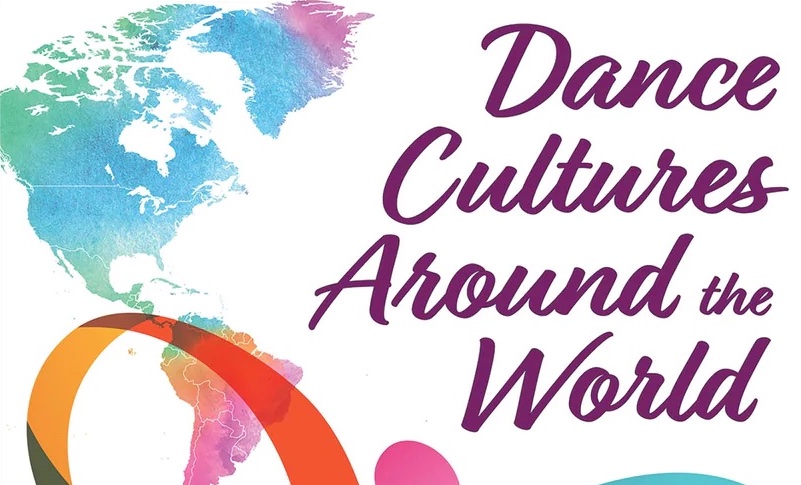Book: Dance Cultures Around the World
Author: Lynn E. Frederiksen and Shih-Ming Li Chang, Human Kinetics, July 2023.
Edited by Lynn E. Frederiksen and Shih-Ming Li Chang, Dance Cultures Around the World is a major dance reference book. Large, thick and heavy, it is extensively researched and includes maps, timelines and many illustrations. It is divided into nine parts (geopolitical regions), with 25 chapters, a preface, acknowledgements and an index at the back.
The introduction reminds us that dance is a global means of communication but not the same everywhere. The authors attempt to define ‘dance’ and the various languages used and the relevance and history of dance in the various countries and cultures examined.
A signature dance or dance-related feature of the culture opens each chapter, which is followed by an introduction to the country’s history, politics and geography, and prominent features of the dance culture, people and events are illuminated. There are also notes on the multicultural flows that have influenced a culture’s dance, colonialism, slavery, dance and religion (and oppression) and dance when forced to disperse. But not every country of the globe is included. What is interesting to note is the blending of dance forms and how in some cases countries far apart have very similar dance forms and cultural systems. The book covers everything from ancient traditional dances still performed to ballet, disco, Flamenco, contemporary dance, showbiz, Butoh, Kabuki, Chinese opera, Indonesian shadow puppets and hip hop. Dance in Ireland comes with a mention of Michael Flatley and Riverdance (but no mention of Legally Blonde). When discussing dance in Russia, both traditional folk dances are mentioned as well as the history of ballet in that country, but a lot is also left out. There are chapters featuring countries where dance is rarely investigated, such as Bulgaria, Croatia and Tahiti.
Where possible, the authors attempt to elucidate the cultural context of many essential rudiments (e.g. props, costume and makeup) that might be misconstrued and all the inherent beliefs unconsciously accepted.
For us Australians, the chapter on dance in Australia concentrates on First People’s dance and culture, the clans, totems, ‘women’s vs ‘men’s’ business, the difference in dance and costumes in various regions and a mention of Bangarra.
The book comes with a well-packaged and useful multimedia resource through HKPropel where one can access dance videos, images and other materials. Teachers will also find it very useful as there are quizzes, test packages, a summary of each chapter, PowerPoint presentations and discussion questions and their recommended answers.
By Lynne Lancaster of Dance Informa.

















